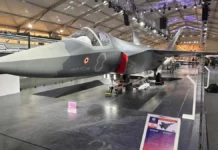After a five years of stagnation, the satellite market is finally rising and is expected to enter positive cycle; compared to 80 satellites launched per year, in the period 2000 – 2005. However, in 2006 the wind has changed with 32% increase in the number of satellite launched. According to Marco Caceres, senior space analyst for Teal. “But something changed in 2006. We launched 107 satellites, or a 32% increase over each of the previous two years. This represents more satellites than we have launched since 2000.”
The total value ($9.39 billion) of the satellites launched last year was also higher than it has been since 1999. This trend is expected to continue, resulting from influx of investments in spacecraft and demand for services. “We have now seen two consecutive years of growth in the number of geostationary (GEO) commercial communications satellites launched and ordered during 2005-2006, says Caceres. “This is important, given that this segment of the satellite market is a key indicator for the overall market.”
Teal Group released highlights of its study “Prospects for Growth in the Satellite Market” at the Space Foundation’s 23rd National Space Symposium. The overview emphasizes those segments within the world satellite market that offer the most significant opportunities for growth during the next 5-10 years.
The study seeks to answer whether the growth was meaningful and marks the beginning of a consistent trend, or whether it was simply an anomaly. It notes, for example, the positive numbers for geostationary (GEO) commercial communications satellites.
In order to pay for the construction and launch of these satellites, operators are attracting increasing levels of investment capital to their programs. Investor interest in both GEO and low earth orbit (LEO) satellite systems is on the rise, and this is good news for the satellite manufacturing and launch services industries. The GEO satellite market alone will be worth approximately $25 billion over the next 10 years, with an estimated 231 satellites built and launched, while the LEO mobile replacement satellites for in-orbit systems such as Globalstar, Iridium and Orbcomm will add up to $4 billion in market value through 2016.
The emerging cycle within the commercial satellite market will coincide with an up cycle in the military satellite market, led by over 200 new- generation US military satellites valued at about $120 billion. “Many of these military satellites have been delayed and are severely over budget, but they will be built and launched because the requirements for them exist regardless,” says Caceres.



















